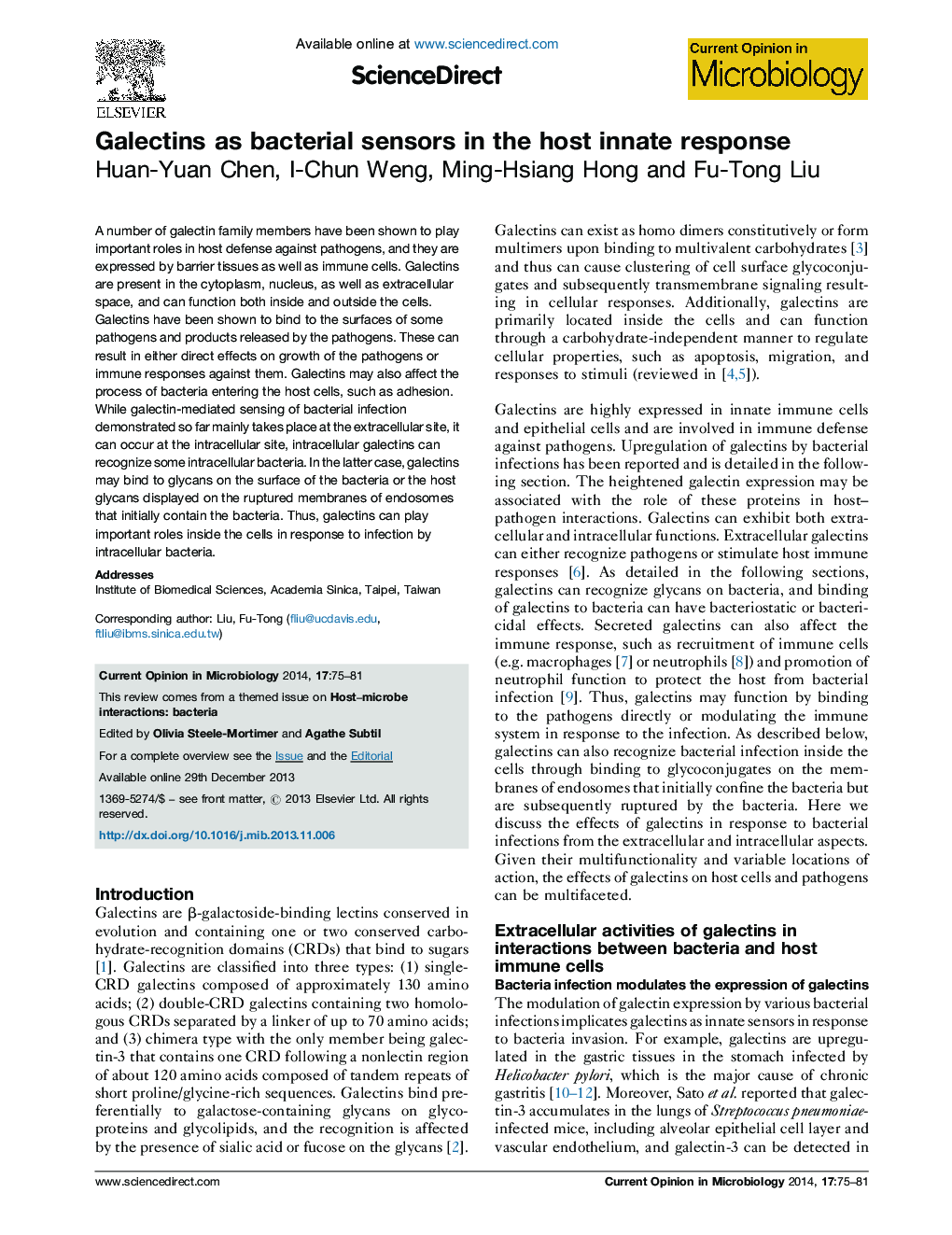| Article ID | Journal | Published Year | Pages | File Type |
|---|---|---|---|---|
| 6132197 | Current Opinion in Microbiology | 2014 | 7 Pages |
Abstract
A number of galectin family members have been shown to play important roles in host defense against pathogens, and they are expressed by barrier tissues as well as immune cells. Galectins are present in the cytoplasm, nucleus, as well as extracellular space, and can function both inside and outside the cells. Galectins have been shown to bind to the surfaces of some pathogens and products released by the pathogens. These can result in either direct effects on growth of the pathogens or immune responses against them. Galectins may also affect the process of bacteria entering the host cells, such as adhesion. While galectin-mediated sensing of bacterial infection demonstrated so far mainly takes place at the extracellular site, it can occur at the intracellular site, intracellular galectins can recognize some intracellular bacteria. In the latter case, galectins may bind to glycans on the surface of the bacteria or the host glycans displayed on the ruptured membranes of endosomes that initially contain the bacteria. Thus, galectins can play important roles inside the cells in response to infection by intracellular bacteria.
Related Topics
Life Sciences
Immunology and Microbiology
Microbiology
Authors
Huan-Yuan Chen, I-Chun Weng, Ming-Hsiang Hong, Fu-Tong Liu,
